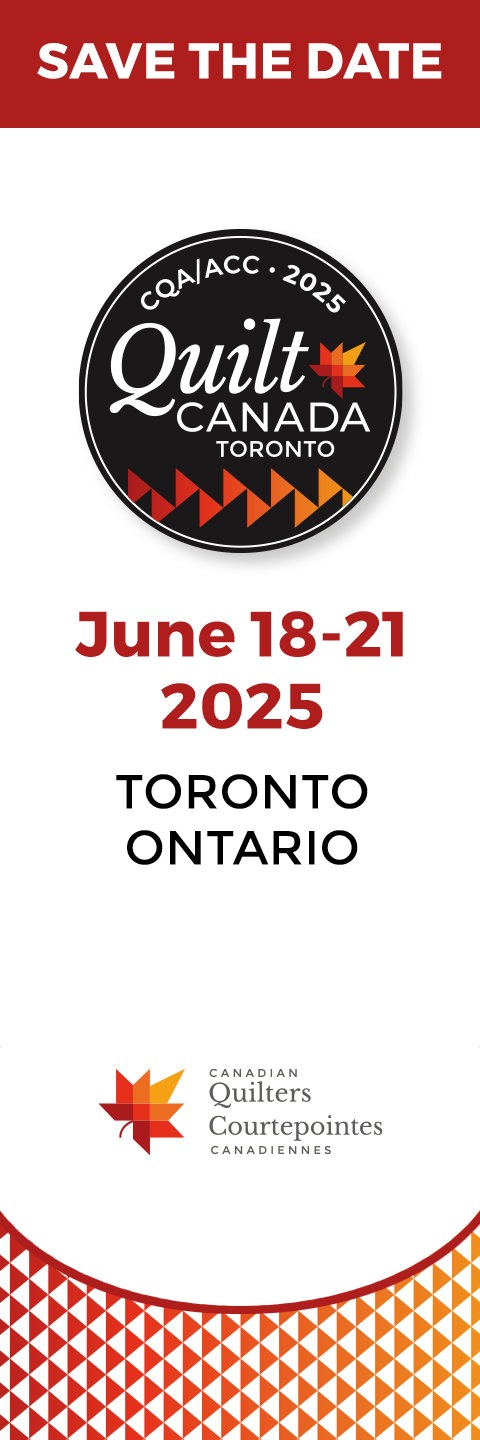This project started with a white cloth and a desire to experiment with Caran d’Ache® Neocolor II pastels. The photo I took during cherry blossom season in Japan was my inspiration for the piece. 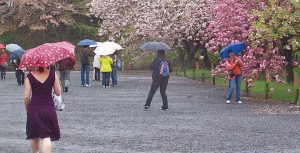
The figure is intentionally reversed. I drew the image on tracing paper and moved it around on the fabric until I was happy with its position. Tracing paper allows the image to show even when it’s flipped over.
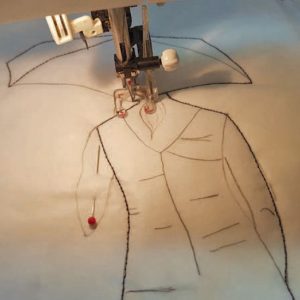
As you can see, I free-motion quilted lines through the tracing paper and onto the quilt sandwich. After the first round of stitching I pulled away the tracing paper and did a second pass to darken the lines. Sometimes I intentionally stitched the lines loosely because I love a sketchy look, but I didn’t stray too far. In my mind, accuracy seemed to fit the character of this piece.
Now for the experiment! I used the pastels in a watercolour fashion, but wondered how much control I could exercise. Was it possible to keep the colour inside the lines? Using the pastels like crayons, I coloured in the dress – dry pastels on dry fabric. I used a fairly stiff paintbrush to apply water sparingly. My goal was to use enough water to activate the pigment, but not so much it would cause the colour to bleed into the background. The experiment went better than anticipated!

The painting would be more accurate if I had walked to the next room and found a smaller brush, but I was creating in the moment and used the brush in hand. I thought the whole experiment could go wrong, so why invest too much effort. In the end, the painting worked pretty well. I used the same process for the umbrella, but I pushed to see how much water I could try. It turns out, there is not much wiggle room. There is wicking around the edges caused by just a tiny bit of excess water. Colours are more vibrant when wet and look much softer when dry.
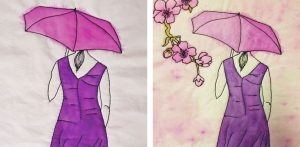
I wanted to add cherry blossoms, so repeated the entire process – drawing, stitching colour and painting. After heat-setting the piece, I wet it again and started to develop the watercolour background. I didn’t mask the parts I wanted to keep white, I simply avoided getting those areas wet. The method worked very well. As the process unfolded, I wondered what would happen if I quilted some extra flowers using pink thread. Though they are not my favourite, they provided some valuable lessons.
Upon reflection of the process, here is what I learned for next time:
1 Use a smaller brush to assert more control when painting on a small scale.
2 Pencil on tracing paper transfers to the quilt and shows up as dark lines under light thread, which can be ugly and impossible to remove.
3 White fabric marker shows up surprisingly well on tracing paper and is a great alternative to pencil when using light thread!
4 Using fabric medium might be an alternative to using water when more control is desired. I tried it, timidly, in the full flower, lower on the branch. I thought a bit more colour might cover the pencil smudges. The fabric medium idea needs further exploration.
5 Eliminating the extra ghost flowers would have made me happier, but it was a decision made too late. After the first one, I was committed. The flower was double stitched and too difficult to rip out.
6 Working small took away my fear of failure. If things went awry, it would be very easy to try again!
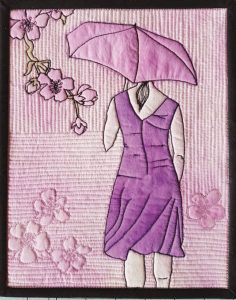
Follow more of Carole’s quilting adventures on her Fresh off the Frame blog.


